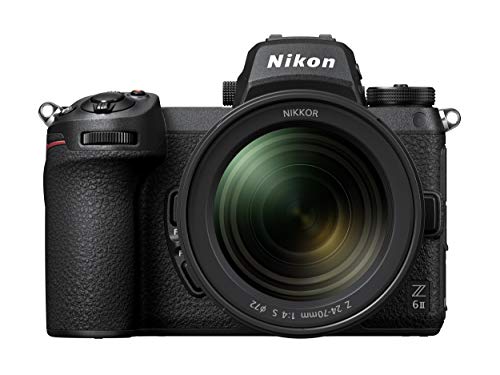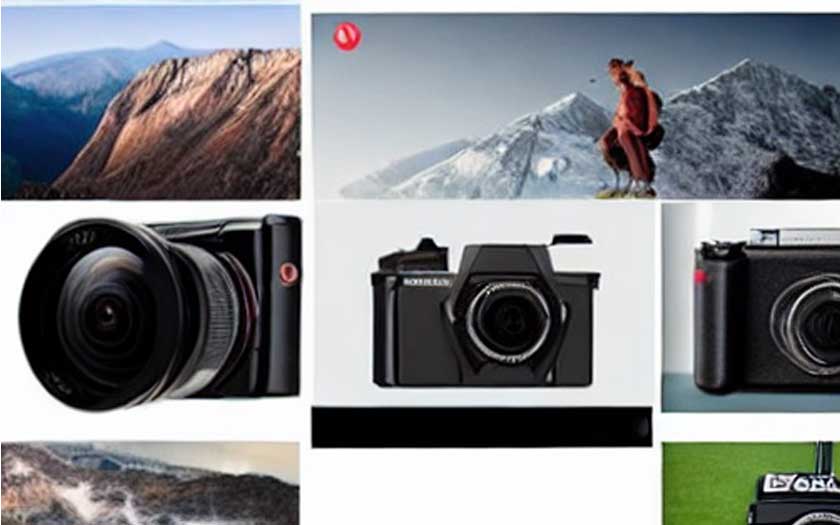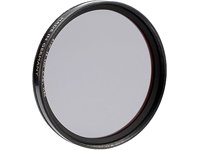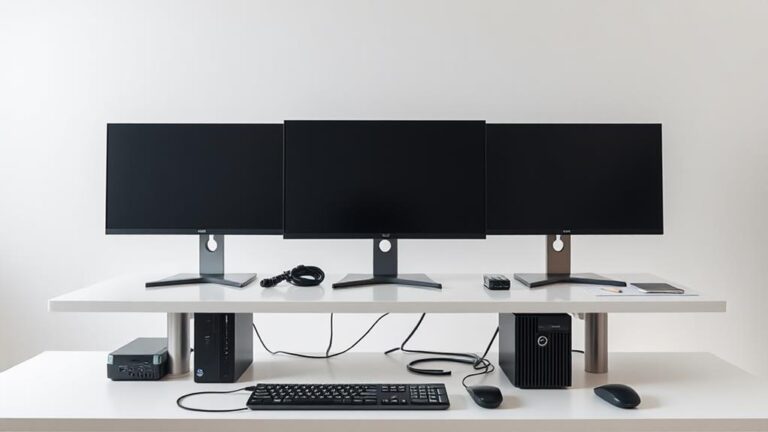The Best Mirrorless Cameras For 2023: A Few of Our Favorites
Are you ready for a revolution in photography? 2023 is here, and with it comes a new range of mirrorless cameras that will change the game. Whether you’re an amateur photographer or a professional, a time to invest in a mirrorless camera is never better.
But with so many options, how do you know which one to choose? Don’t worry; we’ve got you covered. This article will dive deep into a few of the best mirrorless cameras in 2023.
We’ll discuss the key factors you should consider when choosing a camera, from sensor size to autofocus speed and everything in between.
By the end of this article, you’ll have all the information you need to make an informed decision and take your photography to the next level. So, sit back and get ready to discover the best mirrorless cameras for 2023.
The Mirrorless Cameras We Like
If you’re in the market for a top-quality mirrorless camera, you’ll definitely want to check out some of our favorites, including the Fujifilm X-T4, the Nikon Z6, the Fujifilm X-H2, the Sony Alpha A7 III, and the Canon EOS R6.
These mirrorless models all feature outstanding image quality, fast autofocus systems, and a range of advanced features that make them ideal for serious amateur and professional photographers alike.
Whether you’re shooting portraits, landscapes, or action shots, these cameras have everything you need to capture stunningly beautiful images.
Fujifilm X-T4 Mirrorless Digital Camera XF/16-80mm Lens

You’ll love the Fujifilm X-T4 with its advanced features, such as In-Body Image Stabilization, which provides up to 6.5 stops of image stabilization, and the newly developed mechanical shutter capable of making images at 15 frames per second and 300,000 actuations. The X-T4 also boasts a larger battery capable of up to 600 frames per charge, ensuring you never miss a moment.
The 1.62 million pixel vari-angle touchscreen LCD can be adjusted to make it visible from a wide range of positions, allowing you to shoot from unique angles. The X-T4’s updated 3.69 million pixel/100fps electronic viewfinder provides a clear view of your subject, even in bright sunlight.
The movie mode is activated, meaning X-T4 can record professional-level DCI 4K/60p and Full HD/240p super slow-motion video. The AF-C subject tracking works in low-light conditions down to -6EV, ensuring you never miss a shot.
With Fujifilm’s selection of Film Simulations, which digitize some of the industry’s most iconic films and puts them right at your fingertips, you can add a unique touch to your photos and videos. ETERNA Bleach Bypass is the newest addition to this much-loved collection of film simulation modes.
Product Specs:
- Five-axis In-Body Image Stabilization (IBIS) provides up to 6.5 stops of image stabilization.
- Four-axis Digital Image Stabilizer
- Newly developed mechanical shutter capable of making images at 15 frames per second and 300,000 actuations
- Larger capacity battery capable of up to 600 frames per charge
- 1.62 million pixel vari-angle touchscreen LCD that can be adjusted to make it visible from a wide range of positions
- Updated 3.69 million pixel/100fps electronic viewfinder
- Movie mode is activated, meaning X-T4 is capable of recording both professional-level DCI 4K/60p and Full HD/240p super slow-motion video
- AF-C subject tracking works in low-light conditions down to -6EV
- Fujifilm’s selection of Film Simulations, which digitize some of the industry’s most iconic films and puts them right at your fingertips
- Video capture resolution: 2160p
Pros:
- Advanced In-Body Image Stabilization
- Professional-level video recording capabilities
- Updated electronic viewfinder
- Fujifilm’s selection of Film Simulations
- Larger capacity battery
Cons:
- AF is not as good as some other cameras on the market
- Flash hot shoe mount may occasionally be faulty.
You can get more in-depth information by reading our Fujifilm X-T4 review.
Nikon Z6 II Camera w/ 24-70mm Lens

Take your photography to the next level with the compact and powerful Nikon Z6 II Camera with a 24-70mm lens. This full-frame mirrorless camera boasts a large-diameter Z mount, allowing for more advanced optics and lens designs, including ultra-fast f/0.95 options.
The Z 6 features a high-performing FX-format 24.5MP BSI CMOS sensor and the EXPEED 6 Image Processing Engine delivering outstanding image quality and speed with a native ISO 100-51200 sensitivity range.
The camera features an advanced phase-detect autofocus system using 273 points covering 90% of the image area, and the sensor features 5-axis Vibration Reduction technology for stabilized photos and video regardless of the lens used.
The Z 6 is also capable of UHD 4K recording at up to 30p and can use the N-Log gamma profile and the camera’s 10-bit HDMI output to create cinematic video quality. With a slimmed-down design and lighter build, this camera maintains the weather sealing and ergonomics for which Nikon is known.
The camera features multiple displays and screens for ease of use, including a 0.80x 3.6m-dot EVF with NIKKOR optics and a Fluorine coating, ensuring clear viewing. The back of the camera has a 3.2′ 2.1m-dot tilting touchscreen LCD while the top offers a dot-matrix OLED for quickly checking settings.
For storage, the Z 6 has a single XQD card slot that is compatible with CFexpress for faster speeds in the future. Additionally, the body is equipped with both Wi-Fi and Bluetooth.
Product Specs:
- 24.5MP FX-format BSI CMOS sensor
- EXPEED 6 image processor
- 3.2-inch tilting touchscreen display
- 0.80x 3.6m-dot EVF with NIKKOR optics
- UHD 4K video recording at up to 30p
- Advanced phase-detect autofocus system using 273 points covering 90% of the image area
- 5-axis Vibration Reduction technology
- Single XQD card slot compatible with CFexpress
- Wi-Fi and Bluetooth connectivity
Pros:
- Compact form factor and lighter build
- Advanced autofocus system with 273 points covering 90% of the image area
- UHD 4K video recording at up to 30p
- 5-axis Vibration Reduction technology for stabilized photos and video
- Single XQD card slot compatible with CFexpress
Cons:
- The single card slot may be limiting for some users
- Limited lens selection compared to established mirrorless systems
Fujifilm X-H2 w/ 16-80mm Camera

Step up your photography game with the Fujifilm X-H2 camera, a compact, portable powerhouse that captures images with amazing clarity and speed. It includes an XF16-80mm lens for added versatility.
One of Fujifilm’s APS-C cameras, it features a 40-megapixel APS-C back-side illuminated X-Trans CMOS 5 HR imaging sensor and X-Processor 5; this camera delivers stunning 8K/30p video and 10-bit 4:2:2 ProRes footage recorded internally via CF Express Type B card.
The F-Log2 color profile with a dynamic range extending to 13+ stops and support for Apple ProRes RAW and Blackmagic RAW gives you the flexibility to achieve your creative vision.
Plus, the improved in-body image stabilization (IBIS) offers seven stops of compensation and features an enhanced algorithm that produces shake-free results in more scenarios than ever before.
The Fujifilm X-H2 camera is designed for speed and precision. Full-resolution images are recorded at an incredible 15 frames-per-second when using the mechanical shutter or 20fps in the 1.29x crop factor option with the electronic shutter.
The camera also features Pixel Shift Multi-Shot, which delivers 160-megapixel images for the ultimate quality when detail really matters.
And with wired and wireless options for transferring image and video data, you can easily share your creations with the world. The camera’s compact and portable body, 3D electronic level, and clear in-camera view make it easy to take on the go and get the shot you want.
Product Specs:
- 40-megapixel APS-C back-side illuminated X-Trans CMOS 5 HR imaging sensor
- X-Processor 5
- 8K/30p video, 10-bit 4:2:2 ProRes footage recorded internally via CF Express Type B card
- 12-bit RAW footage recorded via the Type A HDMI socket to compatible external recorders
- F-Log2 color profile with dynamic range extending to 13+ stops
- Improved in-body image stabilization (IBIS) offers seven stops of compensation
- Pixel Shift Multi-Shot delivers 160-megapixel images
- Full-resolution images can be recorded at 15 frames-per-second using the mechanical shutter or 20fps in the 1.29x crop factor option with an electronic shutter.
- Supports wireless image transfer through the Fujifilm Remote Camera App and natively delivers webcam resolutions of up to 4K/60p
- Optional VFT-XH Wireless File Transmitter Battery Grip functionality
Pros:
- Amazing image clarity and quality
- Fast and accurate focus speed
- Compact and portable body
- XF16-80mm lens included for added versatility
- Pixel Shift Multi-Shot for ultimate image quality
- Improved in-body image stabilization (IBIS) offers seven stops of compensation
Cons:
- Pricey compared to other mirrorless cameras in its class
- Limited lens selection compared to other brands
- Some users may find the button layout confusing or difficult to navigate.
Sony Alpha A7 III w/ 28-70mm OSS Camera

Get ready to capture stunning images and 4K HDR3 4 movie recordings with the Sony a7 III mirrorless interchangeable lens camera. This full-frame camera has an advanced 24.2MP back-illuminated 35mm image sensor and a 15-stop dynamic range that produces high-quality images with exceptional detail and vibrant colors.
With an impressive 693 phase detection and 425 contrast AF points, you can capture the perfect shot with ease and precision. The camera’s 10fps silent or mechanical shutter with AE/AF tracking lets you capture fast-moving subjects without any noise or disturbance.
The Sony a7 III full-frame camera is designed for enhanced mobility, with a lightweight and compact body that makes it easy to carry around.
Product Specs:
- Advanced 24.2MP BSI Full-frame Image Sensor w/ 1.8X readout speed
- 15-stop dynamic range, 14-bit uncompressed RAW, ISO 50 to 204,800
- Up to 10fps Silent or Mechanical Shutter with AE/AF tracking
- 693 phase-detection / 425 contrast AF points w/ 93% image coverage
- Sensor Type: 35mm full frame (35.6×23.8mm), Exmor R CMOS sensor
- 4K HDR3 4 movie recording capability
Pros:
- Outstanding images with exceptional detail and vibrant colors
- Lightweight and compact body for enhanced mobility
- Reliable operability for confident shooting
Cons:
- Some customers have experienced issues with the autofocus mode
- Overheating during filming can be a problem
- Repair policy and potential additional charges for replacement may be a concern for some customers.
Canon EOS R6 w/ RF 24-105mm Camera

The Canon EOS R6 Mark II with the RF 24-105mm lens is a perfect choice for photographers and filmmakers looking for a versatile camera that delivers high-performance operation and unparalleled creativity.
With a new 24.2 MP Full-Frame CMOS sensor and a powerful DIGIC X Image Processor, this camera captures sharp, detailed images even in low-light scenarios.
It also offers high-speed continuous shooting at up to 12 fps with a mechanical shutter and up to 40 fps using the electronic (silent) shutter, making it an ideal choice for capturing dynamic action photos such as athletes or animals.
The highly responsive Dual Pixel CMOS AF II system covers up to approximately 100% x 100% of the picture area, breaking the image into up to 1,053 automatically-selected AF zones during Whole Area AF.
This camera also features highly accurate subject detection developed using Deep Learning Technology, making it possible to detect horses, trains, airplanes, and conventional subjects like people, animals, and vehicles.
The R6 Mark II can also locate and focus upon a person’s head, face, or eye when the Subject Detection menu is set to People, making it an ideal choice for portrait photographers.
Product Specs:
- 24.2 MP Full-Frame CMOS Sensor
- DIGIC X Image Processor
- Dual Pixel CMOS AF II system
- RAW Burst Mode at up to 30 fps
- High-speed continuous shooting at up to 12 fps with the mechanical shutter and up to 40 fps using the electronic shutter
- Deep Learning Technology for highly accurate subject detection
- 6K oversampled uncropped 4K movie at up to 60 fps
- Full-HD High-frame rate movie recording at up to 180 fps
- Animal detection for cats, dogs, birds, and horses
Pros:
- High-performance operation
- Versatile camera for both personal and professional use
- Highly responsive Dual Pixel CMOS AF II system
- Can locate and focus on a person’s head, face, or eye
- Deep Learning Technology for highly accurate subject detection
- Ample video recording features
Cons:
- Expensive compared to some other mirrorless cameras
- Limited lens selection compared to other brands
- No built-in flash
Factors to Consider When Buying a Mirrorless Camera
When considering buying a mirrorless camera, there are several key factors that you need to take into account.
Sensor size is one such factor because it determines the quality of the images you can produce.
The Autofocus system is another key consideration, ensuring your shots are always focused.
Lens selection is also essential as it determines the range of photography you can undertake.
Image stabilization, video capability, battery life, and price are critical factors you must consider before purchasing.
Sensor Size
Going big or going home seems to be the mantra for sensor sizes in mirrorless cameras. Larger sensors capture more light, improving image quality, especially in low-light situations.
Sensor size is measured in millimeters, and the most common sizes are Micro Four Thirds, APS-C, and full-frame. Micro Four Thirds sensors are the smallest, but they have their own advantages. They make the camera and lenses more compact, which is great for travel or street photography.
Overall, sensor size plays a crucial role in the image quality of mirrorless cameras. It’s important to consider your shooting style, budget, and intended use when choosing a camera with a specific sensor size.
Whether you choose a Micro Four Thirds, APS-C, or full-frame sensor, take advantage of the technical advancements mirrorless cameras offer for the ultimate photography experience.
Autofocus System
Now that you understand the importance of sensor size let’s dive into the next crucial aspect of mirrorless cameras – the autofocus system. As a photographer, your primary concern is capturing the perfect shot; having a reliable autofocus system is key to achieving that goal.
The autofocus system allows your camera to focus on the subject quickly and accurately, ensuring that your images are sharp and in focus. Two types of autofocus systems are to consider – contrast detection and phase detection.
Contrast detection autofocus works by analyzing the contrast in the image to find the focal point, which can be slower and less accurate in low-light situations. On the other hand, phase detection autofocus uses dedicated autofocus sensors to detect and focus on the subject rapidly, making it faster and more accurate, especially in challenging lighting conditions.
All of the cameras we reviewed have excellent autofocus systems. When choosing a mirrorless camera, it’s essential to consider which autofocus system would work best for your photography needs.
Lens Selection
Let’s dive into lens selection, a crucial aspect of capturing stunning photos with your mirrorless camera.
When it comes to choosing the right lens, it’s important to consider the type of photography you’ll be doing.
For example, if you’re interested in landscape photography, you’ll want to look for a lens with a wide-angle focal length, such as a 10-24mm or 16-35mm lens.
On the other hand, if you’re interested in portrait photography, you’ll want to look for a lens with a longer focal length, such as an 85mm or 135mm lens.
Another important factor to consider when selecting a lens is the aperture.
The wider the aperture, the more light can enter the lens, which is particularly important when shooting in low-light conditions.
A lens with a wide aperture, such as f/1.4 or f/1.8, is a great choice for portrait photography, as it allows you to create a sharp subject with a beautifully blurred background.
Lastly, don’t forget to consider the lens quality you choose.
A high-quality lens will not only produce sharper images, but it will also be more durable and last longer, making it worth the investment in the long run.
Image Stabilization
You absolutely need to have image stabilization in your lens if you want to capture clear and sharp photos, especially if you have shaky hands or are shooting in low-light conditions. Image stabilization (IS) is a technology that helps stabilize your lens, reducing the camera shake and resulting in clearer and sharper images.
This technology is particularly important in mirrorless cameras as they tend to be smaller and lighter than DSLRs, making them more prone to camera shake.
There are two types of image stabilization: in-lens and in-body. In-lens stabilization is built into the lens itself and is usually specific to the brand and type of lens.
In-body stabilization, on the other hand, is built into the camera body and can work with any lens. While both types of image stabilization are effective, in-lens stabilization tends to be more effective as it is tailored to the specific lens.
When choosing a mirrorless camera, it is important to consider the type of image stabilization available and ensure that it meets your needs.
Video Capability
If you like capturing moving images, having a camera with good video capability will be important. The best mirrorless cameras in 2023 will have some of the most advanced video features you’ll find. Here are five things to consider when looking for a camera with great video capability:
- High-resolution video: Cameras with 4K and even 8K video capabilities are becoming more common. These high resolutions offer stunning detail and clarity in your videos.
- Slow-motion options: Being able to shoot slow-motion video is a great way to add drama and impact to your footage. Look for cameras that can shoot at high frame rates for the best slow-motion results.
- Autofocus during the video: Good autofocus is important, especially in capturing moving subjects. Look for cameras with advanced autofocus systems that track subjects as they move.
- Image stabilization: As mentioned in the previous subtopic, image stabilization is crucial for keeping your videos steady and smooth. Look for cameras with in-body stabilization or lenses with stabilization built-in.
- Audio quality: Good audio is just as important as good video when it comes to capturing moving images. Look for cameras with built-in microphones or the ability to attach an external microphone for the best audio quality.
Regarding video capability, the best mirrorless cameras for 2023 will offer some of the most advanced features you can find. Considering these five factors, you can find a camera to help take your video content to the next level.
Battery Life
The longevity of a camera’s battery is crucial to consider for those who plan on capturing moments on the go without worrying about running out of juice.
Mirrorless cameras have come a long way in terms of battery life, with some models boasting up to 1,000 shots per charge. However, this number can vary depending on various factors, such as the camera’s settings, temperature, and usage habits.
To extend the battery life of your mirrorless camera, it’s important to turn off unnecessary features such as Wi-Fi and image stabilization when not in use. Investing in spare batteries or a battery grip is a good idea to ensure you never miss a shot due to a dead battery.
Battery life is not the only factor to consider when choosing a mirrorless camera, but it is certainly important for those who value convenience and portability. Choosing a mirrorless camera with a reliable battery life can make all the difference when capturing those special moments on the go without constantly worrying about your camera dying mid-shoot.
With the right camera and accessories, you can have peace of mind and focus on creating stunning photos and videos that will last a lifetime.
Price
Now that you understand the importance of battery life let’s shift our focus to another crucial factor – price.
As you search for the best mirrorless camera, you’ll quickly realize that the price range can vary significantly. It’s essential to have a clear idea of your budget before purchasing to ensure you get the best value for your money.
Remember that the most expensive option isn’t always the best choice for you. While high-end models may come with advanced features and superior image quality, they may not be necessary for your specific needs.
On the other hand, a lower-priced camera may still deliver excellent results while saving you significant money. It’s all about finding the right balance between features, performance, and budget.
With a little research, you can find the best mirrorless camera that meets your requirements in a price range that fits your budget.
Frequently Asked Questions
How does a mirrorless camera differ from a DSLR camera?
Unlike their DSLR counterparts, mirrorless cameras don’t have a reflex mirror or optical viewfinder. Instead, they use electronic viewfinders and rely on the image sensor to provide a live scene preview. This design makes them more compact and lightweight while delivering excellent image quality.
Additionally, mirrorless cameras typically offer faster autofocus and continuous shooting speeds, making them a great choice for action photography. Overall, if you’re looking for a camera that combines the portability of a point-and-shoot with the advanced features of a DSLR, a mirrorless camera might be the perfect choice.
Can I use my old lenses with a mirrorless camera?
If you’re wondering whether you can use your old lenses with a mirrorless camera, the answer is: it depends.
Mirrorless cameras often have a different mount than DSLRs, so if your old lenses were designed for a DSLR, they may not be compatible with a mirrorless camera. However, many mirrorless camera manufacturers offer adapters that allow you to use your old lenses with their cameras.
It’s important to note that using an adapter may affect your lens’s autofocus speed and overall performance, so it’s worth researching to find the best adapter for your needs. Some mirrorless cameras have a smaller sensor size than DSLRs, which means that lenses may have a different effective focal length.
While using your old lenses with a mirrorless camera is possible, in our opinion, it’s worth considering whether it’s the best option for your photography needs and goals.
How does the autofocus system work in mirrorless cameras?
Regarding autofocus systems in mirrorless cameras, the technology has come a long way in recent years. Unlike traditional DSLRs that use a separate autofocus module, mirrorless cameras use the image sensor to focus on the subject.
This means the autofocus system is faster, more accurate, and can track moving subjects more effectively. Mirrorless cameras also have a wide range of autofocus modes, including face detection, eye detection, and subject tracking.
These modes work by analyzing the scene, identifying the subject, and adjusting the focus. A mirrorless camera’s autofocus system today is significantly better than traditional DSLRs, making them an ideal choice for photographers who want fast and accurate autofocus performance.
Is the battery life in mirrorless cameras comparable to DSLRs?
Regarding battery life, mirrorless cameras have come a long way in recent years. Compared to DSLRs, they generally have shorter battery life due to their smaller size and higher power consumption from features like electronic viewfinders.
However, many modern mirrorless cameras offer impressive battery life compared to previous models.
With newer technology and efficient power management systems, some mirrorless cameras can last for hundreds of shots on a single charge.
Of course, your mileage may vary depending on your usage and settings, but mirrorless cameras are no longer the battery hogs they used to be.
When choosing a camera, consider battery life important, but don’t let it be the only deciding factor.
Are there any disadvantages to using a mirrorless camera over a DSLR?
If you’re considering switching to a mirrorless camera from a DSLR, there are a few potential disadvantages to consider. One of the main concerns is the battery life, which tends to be shorter than DSLRs due to the electronic viewfinder and continuous autofocus.
And while mirrorless cameras have come a long way in terms of autofocus speed and accuracy, some photographers still prefer the responsiveness and reliability of DSLR autofocus systems.
Another potential drawback is the lack of a built-in optical viewfinder, making tracking moving subjects in bright light more difficult.
Overall, mirrorless cameras offer many benefits, including compact size, silent shooting, and advanced video capabilities, but it’s important to weigh the pros and cons before making the switch.
And That’s a Wrap
Well, congratulations on making it this far! You’ve reached the end of our article on the best mirrorless cameras for 2023. Hopefully, you’ve learned a thing or two about what to look for when buying a mirrorless camera and better understand the available options.
But let’s be real here folks. Are you really going to wait until 2024 to buy a mirrorless camera? By then, we’ll probably have cameras that can take photos with our minds or something equally ridiculous. So don’t be a chump and get yourself a mirrorless camera today.
Sure, it may not have all the bells and whistles of a camera from the future, but at least you’ll be able to capture those precious moments now instead of waiting for technology that may never come.
In all seriousness, the world of mirrorless cameras is constantly evolving, and it can be overwhelming to try and keep up with all the latest features and models. But by taking the time to research and consider your needs and budget, you can find a mirrorless camera that’s a solid choice and will help you capture stunning photos and videos for years.
So don’t hesitate. Get out there and start snapping away!




